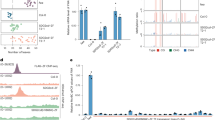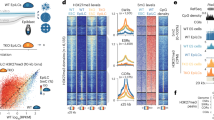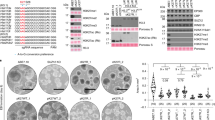Abstract
Various cell types in higher multicellular organisms are genetically homogenous, but are functionally and morphologically heterogeneous due to the differential expression of genes during development, which appears to be controlled by epigenetic mechanisms. However, the exact molecular mechanisms that govern the tissue-specific gene expression are poorly understood. Here, we show that dynamic changes in histone modifications and DNA methylation in the upstream coding region of a gene containing the transcription initiation site determine the tissue-specific gene expression pattern. The tissue-specific expression of the transgene correlated with DNA demethylation at specific CpG sites as well as significant changes in histone modifications from a low ratio of methylated H3- lysine 4 or acetylated H3-lysine 9, 14 to acetylated H4 to higher ratios. Based on the programmed status of transgene silenced in cloned mammalian ear-derived fibroblasts, the transgene could be reprogrammed by change of histone modification and DNA methylation by inhibiting both histone deacetylase and DNA methylation, resulting in high expression of the transgene. These findings indicate that dynamic change of histone modification and DNA methylation is potentially important in the establishment and maintenance of tissue-specific gene expression.
Similar content being viewed by others
Article PDF
Author information
Authors and Affiliations
Rights and permissions
This is an Open Access article distributed under the terms of the Creative Commons Attribution Non-Commercial License (http://creativecommons.org/licenses/by-nc/3.0/) which permits unrestricted non-commercial use, distribution, and reproduction in any medium, provided the original work is properly cited.
About this article
Cite this article
Kang, JK., Park, KW., Chung, YG. et al. Coordinated change of a ratio of methylated H3-Iysine 4 or acetylated H3 to acetylated H4 and DNA methylation is associated with tissue-specific gene expression in cloned pig. Exp Mol Med 39, 84–96 (2007). https://doi.org/10.1038/emm.2007.10
Published:
Issue date:
DOI: https://doi.org/10.1038/emm.2007.10
Keywords
This article is cited by
-
Correlation between the methylation of the FUT1 promoter region and FUT1 expression in the duodenum of piglets from newborn to weaning
3 Biotech (2017)
-
The influence of DNA sequence on epigenome-induced pathologies
Epigenetics & Chromatin (2012)
-
Histone deacetylase inhibitor activity in royal jelly might facilitate caste switching in bees
EMBO reports (2011)



